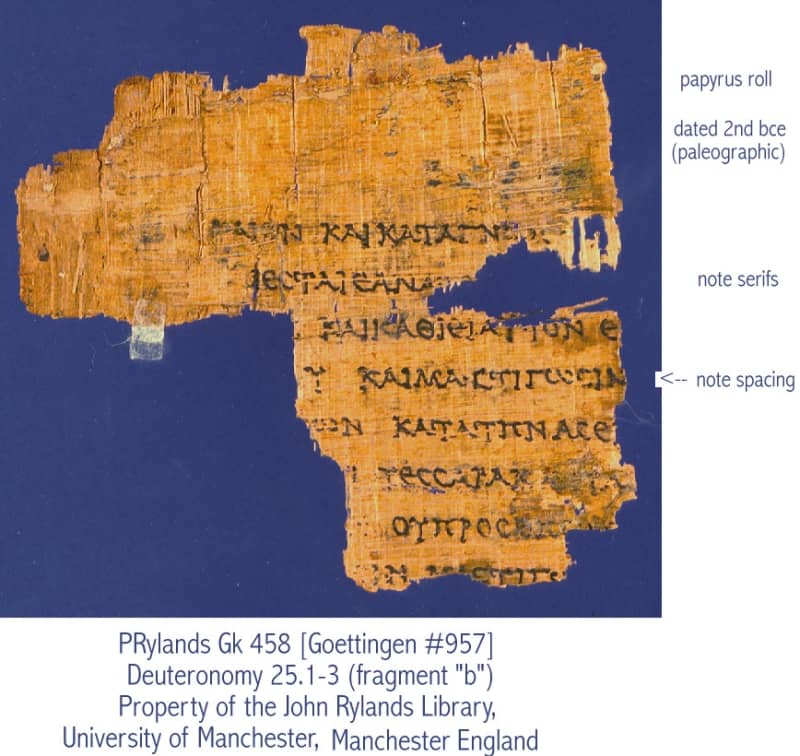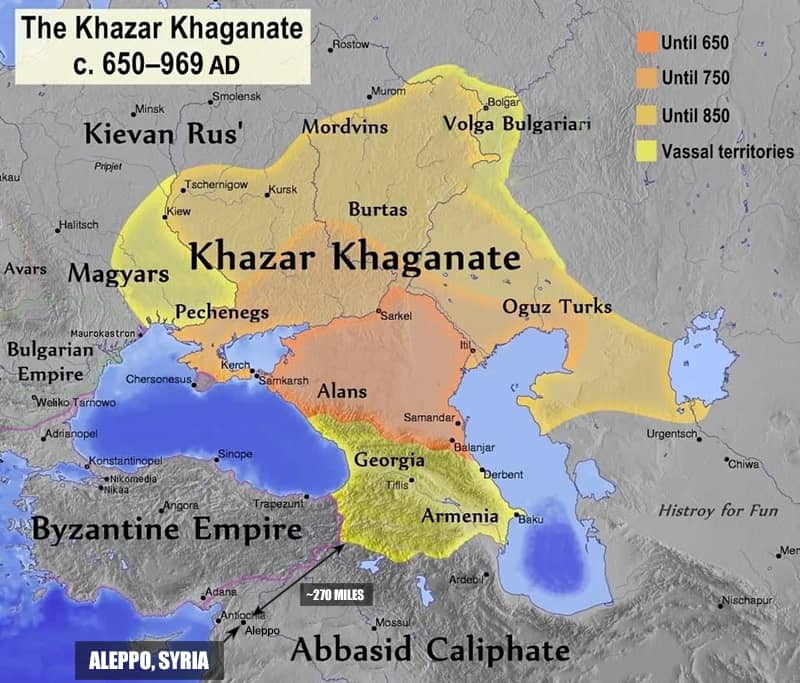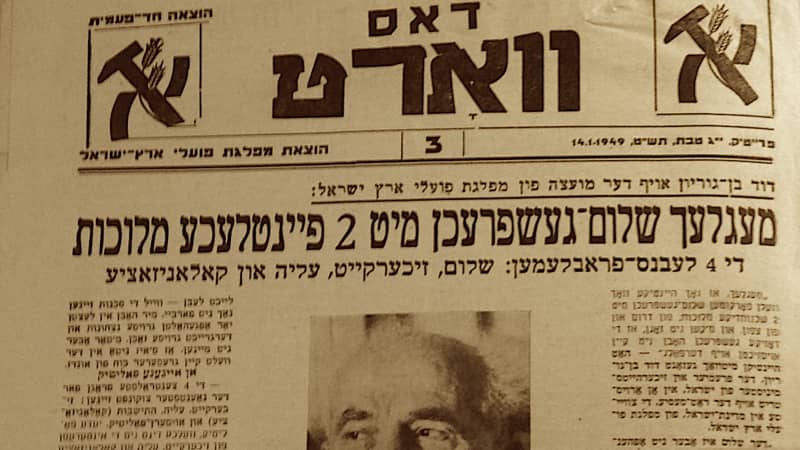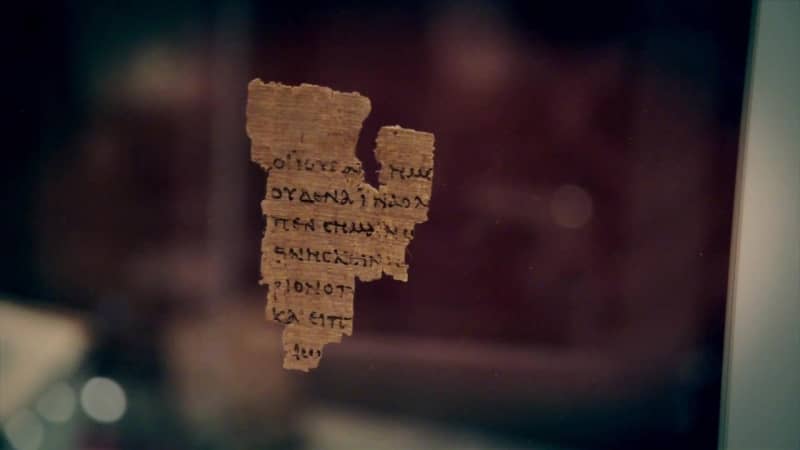Ancient Greek was based on Ancient Phoenician, which is the predecessor to the Ancient Greek alphabet and subsequently Latin and today’s English. But Square Script, today called “Hebrew” was historically used for a different language: Babylonian Aramaic; and later, Yiddish.
Under the notion that Modern Hebrew is a fraud, based on my previous research (here), which proved that Ancient Hebrew did not use square script; and the hypothesis that thereby the “Hebrew” version is a forgery because Ancient Hebrew did not use square script like Modern Hebrew; but rather seeking to disprove (not to validate) the theory – the only true way to discover truth (to attempt to disprove the hypothesis) – the following was the outcome:
All the evidence continues to support that the Bible was likely never written in the language known now as Modern Hebrew, which is based on the Babylonian and Yiddish alphabets; instead, Ancient Hebrew appears to be lost to time and preserved in the Septuagint LXX Bible written in c. 250 BC and used by Jesus and the apostles.
What Bible did Jesus use?
Firstly, did Jesus ever read from the Hebrew Bible? If the Hebrew Bible we have today was genuine, then it should date back to at least Jesus’ time, and Jesus would have read from it.
But Jesus and the Apostles did not use today’s Hebrew Bible; they used the Greek Septuagint LXX, first translated from Ancient Greek around 250 BC; and there is much evidence to support this fact. For one, the New Testament directly quotes the Septuagint. Jesus probably also spoke Aramaic because there were phrases used in the New Testament which seem to derive from Aramaic; but there is no evidence that Jesus spoke Hebrew. Two sources including Bible Study Tools and Christianity.com claim that Jesus used the Septuagint 90% of the time and the Hebrew 10% of the time, but both of these use a verbatim copy (one may have plagiarized the other) and neither offers a source for this claim.
There is no evidence that Jesus ever used the Ancient Hebrew version (lost to time), or even that it still existed at the time. Moreover, since we have no existing copies of the Ancient Hebrew bible, just a “Hebrew” version using Babylonian square script written around 1,000 AD, then it means that scholars have nothing to compare Bible teachings against to assert that Jesus ever used a Hebrew version of the Bible.
Instead, it is well-documented that Jesus used the Septuagint; and this is further supported by the fact that today we have physical manuscripts of the Septuagint dated to over a hundred years before Christ was born that we can compare against. Text and Canon Seminary says, “He would have been familiar with a popular Greek translation of Hebrew Scripture commonly known as the Septuagint, which had already been around for a long time, as well as other Greek and even some Aramaic translations.” [2]
Oldest Manuscripts: Hebrew vs Greek Septuagint LXX
Second, when are the earliest manuscript of the Hebrew Bible that we have today dated to, and how does this compare with the dates of the earliest Septuagint manuscript? The hypothesis is that if the Hebrew manuscript is truly a forgery, then we should see it was forged sometime after the original.
The oldest surviving full manuscript of the Hebrew Bible is The Leningrad Codex, which dates to 1008 AD. This is rather recent, lending further credence to the hypothesis that the Hebrew Bible is a forgery.
But this is not enough proof. Do we have any fragments that are older? Yes, but not by much. The Aleppo Codex is the oldest surviving Hebrew Bible manuscript which is known to date back to around 920-930 AD. We know this genuinely goes back to the tenth century AD because it was preserved in Aleppo, Syria (hence the name), until the 20th century.
Meanwhile, the oldest surviving Septuagint manuscripts are much older, dating to before Christ. The Papyrus Fouad 266 are fragments of Deuteronomy that date back to the first century BC (before Christ). They are written in Greek, not Hebrew.
Papyrus Rylands 458 is the oldest surviving complete copy of the Septuagint. It has been dated back all the way to the second century BC (150 BC). So, we have a copy of the original Bible that likely was the same that Jesus Christ himself read from (perhaps not this manuscript, but one like it), which is hundreds of years older than Christ. So, the Septuagint has been preserved since almost the original translation which was in the 3rd century BC.
 Piece of Papyrus Rylands 458b, part of the oldest surviving bible in the world.
Piece of Papyrus Rylands 458b, part of the oldest surviving bible in the world.DBTM says, “This translation [Septuagint LXX in Greek] became very popular among Jews in the first two centuries before Christ because many Jews in those days did not understand Hebrew. Their ancestors had left Israel centuries before, and generation after generation gradually lost the ability to read the Scriptures in Hebrew.” [2]
So if the Israelites did not even understand Ancient Hebrew, lending credence to the theory that Ancient Hebrew was already basically a dead language by this time; then this is understandable why they used the Septuagint LXX in Greek instead.
The Dead Sea Scrolls: Forgeries
In 1947, just 2 years after the end of WW2 and just 1 year before the creation of the modern Nation-state of Israel in 1948, the so-called “Dead Sea Scrolls” were found in a cave by someone “wandering around”, lending authority and fame that helped establish the State of Israel. How convenient!
Yet today, many of the Dead Sea Scrolls have been proven to be a forgery. When the Museum of the Bible analyzed all of the fragments of the Dead Sea Scrolls that it contained, all of them were proven to be forgeries. It is very possible that all of the rest scrolls are forgeries as well, if they were to be held to the same scrutiny.
There is no historical record leading to the Dead Sea Scrolls such as traditions of being preserved over the millennia – just a few scrolls found thrown in a cave that are supposedly nearly a millennia older than the oldest known surviving Hebrew Bible. This is highly suspect. Because of the dubiousness of the Dead Sea Scrolls and the likelihood they were forged to help establish the modern nation-state of Israel, they cannot be trusted. Instead, we must go with the historically validated versions, namely the oldest, the Aleppo Codex.
Smithsonian continues:
…
“And then he dropped the gauntlet: The Schøyen fragments were only the beginning. The previous year, he said, he’d seen photos of several Dead Sea Scrolls fragments in a book published by the Museum of the Bible, in Washington, D.C., a privately funded complex a few blocks from the U.S. Capitol. The museum was scheduled to open its doors in three months, and a centerpiece of its collection was a set of 16 Dead Sea Scrolls fragments whose writing, Langlois now said, looked unmistakably like the writing on the Schøyen fragments. “All of the fragments published there exhibited the same scribal features,” he told the scholars in attendance. “I’m sorry to say that all of the fragments published in this volume are forgeries. This is my opinion.””
…
“In 2018, Azusa Pacific University, a Christian college in Southern California that had purchased five scrolls in 2009, conceded that they were likely fakes, and it sued the dealer who had sold them. In 2020, the Southwestern Baptist Theological Seminary, in Fort Worth, Texas, announced that the six Dead Sea Scrolls it had purchased around the same time were also “likely fraudulent.””
…
“The most stunning admission came from executives at the Museum of the Bible: They had hired an art-fraud investigator to examine the museum’s fragments using advanced imaging techniques and chemical and molecular analysis. In 2020, the museum announced that its prized collection of Dead Sea Scrolls was made up entirely of forgeries.” [4]
So now we are finding that repeatedly, whenever the Dead Sea Scrolls are held to scrutiny, they are found to be forgeries, fakes; and this has happened all around the world at respected institutions and museums. Therefore, the Dead Sea Scrolls cannot be trusted as authentic.
Moreover, not all the Dead Sea Scrolls are written (or forged) in Hebrew. Many are written in Greek and Aramaic: more likely for the time, for a people that spoke only Greek and Aramaic and did not even understand Ancient Hebrew anymore. Therefore the Dead Sea Scrolls do not provide evidence of Hebrew being used, because most if not all of the scrolls are forgeries.
The Aleppo Codex & The Khazars
The Aleppo Codex, written in 930 AD, was held in Aleppo, Syria and guarded for hundreds of years. The Khazarian Empire, which converted to Judaism around 730 AD, have been alleged to be the true ancestors of the Ashkenazi Jews, and there is substantial DNA evidence, as well as historical evidence, to support this; and it is undisputed that the Khazar kingdom did indeed convert to Judaism in the 8th century.
One source elaborates:
Historically, the Khazarian kingdom stretched into modern-day Turkey. Aleppo, Syria is near the border of modern day Turkey. In fact, the city is only about 440 km (273 mi) from the border of the Khazar kingdom. The Khazars were a Turkic people, although some sources say they blended with neighboring peoples. Ashkenazis directly trace their lineage genetically to the Khazars.

An article from nature says:
The article concluded that at least some of the Ashkenazi matches the Khazarian gene they tested.
Another peer-reviewed article on NCBI says,
So, we can see that there is genetic validation to the Khazar hypothesis, lending both genetic, anthropological, historical, and empirical evidence supporting the theory.
Now consider the timelines. In the 8th century, Khazaria converted to Judaism (Judaism being the mystical Babylonian witchcraft religion, as today’s Jews follow – not the religion of the Old Testament). In the 10th century, the Ashkenazim blended with the Khazars. Also in the 10th century (900s AD), the first manuscripts of the Hebrew Bible were written, and we have no evidence of a Hebrew Bible before this, besides some Dead Sea Scrolls of which many have been proven to be forgeries when held to scrutiny, including all at the Museum of the Bible, and which were “found in a cave” only 1 year before the nation-state of Israel was founded just after WW2.
Further, the location of the known preserved oldest manuscript is located not far from the borders of Khazaria. The Leningrad Codes, written in 1008 or 1009 AD, was written in Cairo. At the time, Egypt was a world superpower. One article states:
Considering its world position, it is understandable that Khazaria, a neighboring world superpower at the time, could be instrumental in the creation of this codex as well.
Modern Hebrew Is Largely a Contrived Language
Modern Hebrew was revived by one man in 1881: Ben-Yahuda. He was born in 1858 in Lithuania, and he moved to Jerusalem in 1881. Here they taught their son Hebrew, the first to speak it in a thousand years since the Khazars. Because the language was a dead language, Ben-Yahuda had to invent many words to complete the language. Over time, many Hebrew newspapers invented their own words too. But this language is not Hebrew at all, but Yiddish. Yiddish is the language of the Khazars, and uses square script.
By 1922, the first Modern Hebrew dictionary was published. Hebrew had been being taught since only 1913 in Jerusalem schools, and after the dictionary was published, Modern Hebrew became the language for all subjects in Jerusalem schools. [16]
 1949 Yiddish newspaper (source)
1949 Yiddish newspaper (source)So the language of Modern Hebrew is not the language that the Ancient Hebrews of the Bible spoke 3,000 years ago. It is a contrived language, based in part off “Hebrew”, which is likely the ancient Khazarian language of Yiddish; and in part completely invented from scratch by a man a few decades before World War I.
Conclusion
For 2,000 years, Ancient Hebrew was a dead language – perhaps even 2,500 or more years. It is debatable whether it was even used at all in Israel around the time of Christ. Christ did not read from the Hebrew Bible, nor did his disciples; they read from the Greek Septuagint LXX, which was translated in the second century BC from Ancient Hebrew.
Ancient Hebrew was written with a different alphabet based on Ancient Phoenician, the predecessor to Ancient Greek (Koine Greek), and subsequently Latin, English, and European languages. Square Script, used for Modern Hebrew, was used in ancient Babylon, as there are ancient relics from Babylon which are inscribed with Babylonian Aramaic, using square script like Modern Hebrew.
The Hebrew Bible we have today only dates back to the 10th century – 1,000 years after Christ and during the height of the Khazar empire, not long after they converted to Judaism. And it uses square script, which was attributed to Babylonian Aramaic, not Ancient Hebrew which was based off Ancient Phoenician, the predecessor to Latin, Greek, and English. Meanwhile, Yiddish, the language of the Khazarians does use square script like Babylonian Aramaic, so the Hebrew Bible we have today is likely simply Yiddish, the Khazarian language, not the language of the Ancient Israelites of the Bible.
The Dead Sea Scrolls, the supposed evidence for more ancient Hebrew bibles which were found conveniently “thrown in a cave” by someone “wandering around” just 1 year (1947) before the creation of the modern State of Israel in 1948, have been repeatedly found to be forgeries around the world: blatant fakes, by credible scholars and forensic scientists, with the results published in all mainstream science and history websites.
And lastly, Modern Hebrew itself, the language spoken today, was only revived by a single man in 1881, and much of it was simply invented from scratch. The first person to ever speak Modern Hebrew was his son. And yet an older version of the language was only known to have been spoken during a revival around the 10th century – the same time that the Hebrew Bible that we have today was written, and the same time as the height of Khazarian Judaism of the Khazarian Empire in what is today known as Ukraine.
We do have the original Bible: it is the Septuagint LXX, written in Koine Greek. The Papyrus Rylands 458 is the oldest complete Septuagint manuscript we have today, and it was written in 150 BC, nearly 200 years before Jesus started his ministry in his early 30s.
This manuscript which survived until today is almost as old as the original written version by the original translators of the Septuagint. But the earliest “Hebrew” manuscript we have was written more than 1,000 years later, the Aleppo Codex from 930 AD, preserved near Khazaria, a major world empire at the time which was known to have converted to Judaism not long before this.
Moreover, the New Testament was written in Greek, not Hebrew; and Jesus and the apostles read and taught in Greek, not Hebrew, and they did not use square script. They taught from the Septuagint, and there is no evidence that they had any “Hebrew” bible at the time, because the earliest reliable manuscripts we have are dated to 900 years after Christ.
Therefore, the hypothesis that the Modern Hebrew Old Testament is a forgery and cannot be trusted is further validated, and I personally would not use it to determine scripture or doctrine; only the Septuagint LXX. I certainly have no desire to learn “Modern Hebrew”, a fictional language invented in the 1800s based on Yiddish and using Babylonian square script instead of the pre-latin alphabet of the real Ancient Hebrew. It appears that the original Ancient Hebrew was lost to time. Perhaps the last remaining copies burned up in the Library of Alexandria. We will never know.
Sources
[0] Modern Hebrew (Square Script) Is Really Babylonian Aramaic | Revive Truth
[1] https://www.historyofinformation.com/detail.php?id=138
What Bible Did Jesus Use? | Discover the Book Ministries
[3] What Is the Oldest Hebrew Bible? | Biblical Archaeology
[4] All of the Museum of the Bible’s Dead Sea Scrolls Are Fake, Report Finds | Smithsonian
[5] How an Unorthodox Scholar Uses Technology to Expose Biblical Forgeries | Smithsonian
[6] Egypt, 1000–1400 A.D. | Met Museum
[7] The Story of the Medieval European Jewish State – The Khazar Khaganate | History is Now
[8] The Aleppo Codex is a medieval bound manuscript of the Hebrew Bible written in the tenth century
[9] The Leningrad Codex is the oldest complete manuscript of the Hebrew Bible made in Cairo in AD 1008
[10] Rylands Papyri 266 The Papyrus Fouad 266 (three fragments listed as Rahlfs 847, 848 and 942): are fragments of the Pentateuch
[11] Papyrus Rylands 458 (TM 62298; LDAB 3459): a manuscript of the Pentateuch
[12] Papyrus Rylands 458: The Oldest Copy of the Greek Septuagint | Christian Publishing House
[13] The Khazar Kingdom’s Conversion to Judaism | Harvard | JSTOR
[14] Y chromosome evidence for a founder effect in Ashkenazi Jews – European Journal of Human Genetics | Nature
[15] The Missing Link of Jewish European Ancestry: Contrasting the Rhineland and the Khazarian Hypotheses | NCBI
[16] Hebrew wasn’t spoken for 2,000 years. Here’s how it was revived | National Geographic
[17] IOSCS Critical Editions of Septuagint/Old Greek Texts | UPenn




Where does the Tyndale bible fit in?
What New Testament manuscript is considered valid?
Does the 1611 KJV get it correct?
Thank you in advance
Rodger
Technically, the “authorized” text (Textus Receptus) used for the KJV did use the Hebrew version. The Septuagint LXX is the original. You can find the original bible here https://septuagint-lxx.com
Interesting article.
“Ancient Greek was based on Ancient Phoenician, which is the predecessor to the Ancient Greek alphabet and subsequently Latin and today’s English.”
English is not a Latin language. It is a Germanic language.
English is not a Latin language, however the alphabet was derived from it, and much of our language was indeed derived from Latin.
From Latin and French (which is a Latin language), English is 50-60% Latin based.
Latin and Latin-based words are far more common in formal, technical, academic, legal, and scientific vocabulary, where estimates can reach around 90% in some fields.
Therefore the statement that “English is not a Latin language” is not quite true. Yes it is Germanic, but the vocabulary is more Latin than German.
“Studies that categorize English vocabulary by source often give figures around 25–27% of the lexicon as Germanic in origin, compared with roughly 50–60% from Latin and French combined.”